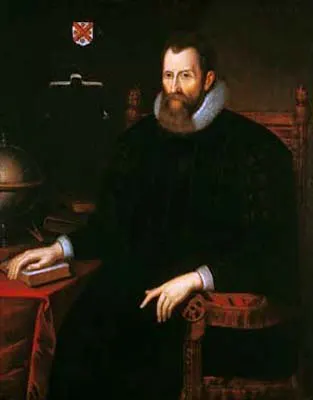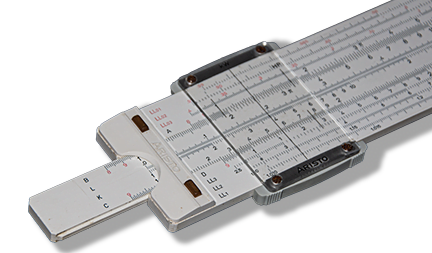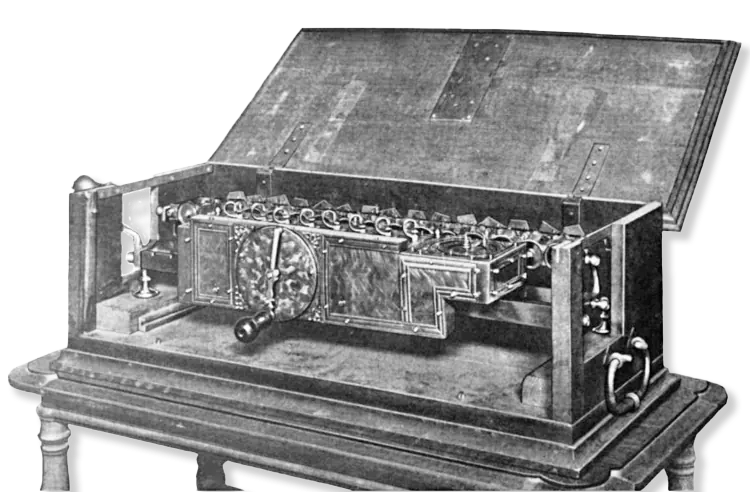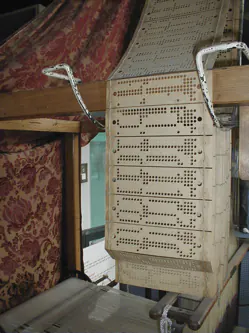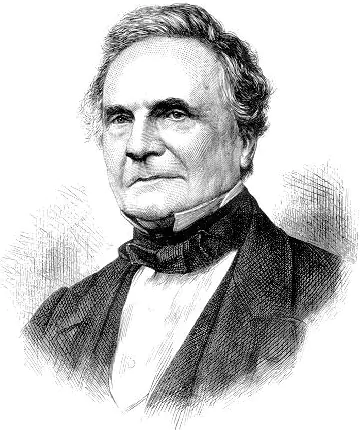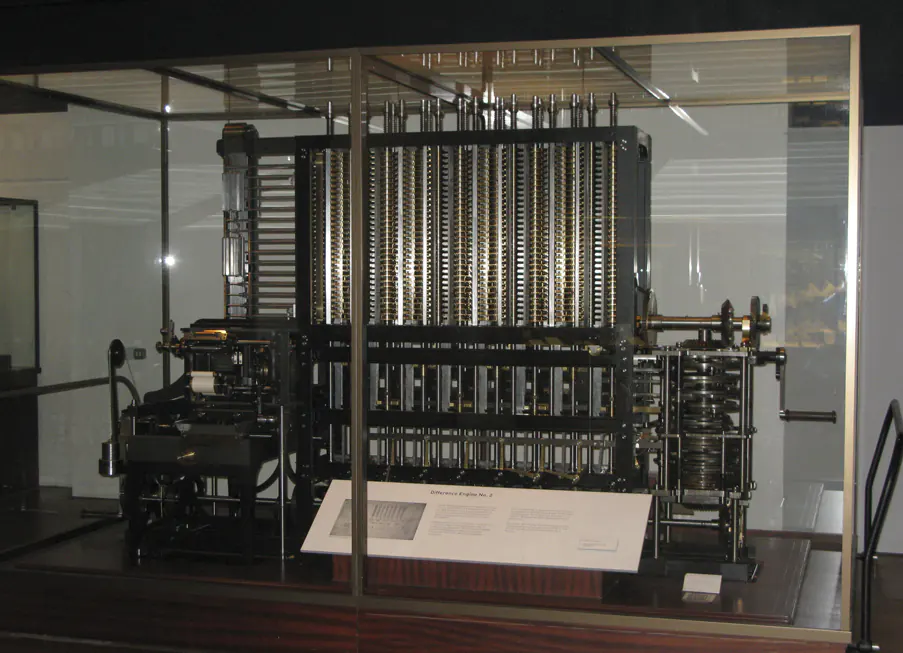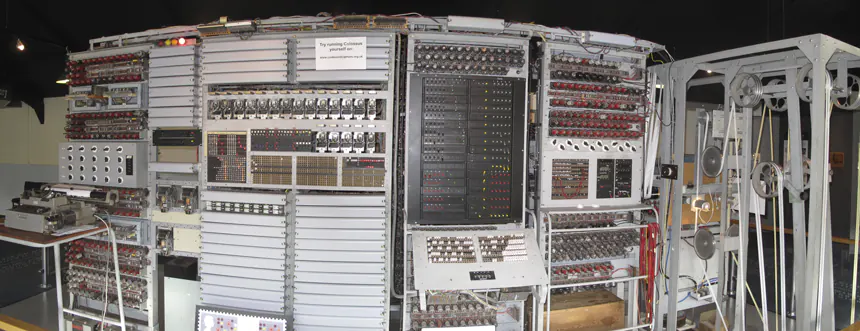The History of Calculating Machines
People have needed to carry out, mathematical calculations as part of their job since the earliest of times. These have mainly been scientists, engineers, mathematicians, accountants and tax collectors. As these calculations became more complex, it was no longer possible to use mental arithmetic, fingers or paper and pencil. To solve these more complex problems involving larger numbers, it was necessary to develop some form of calculating machine. Like most things, when someone invents a machine it is not long before someone else improves on the design, making it difficult to identify all the different types of calculating machines. The list below shows some main inventions created over time to simplify the process of mathematical calculation.
The Earliest Calculating Machines
The earliest recorded calculating machine was the abacus or counting frame. The name abacus, derived from the Ancient Greek word “Abax” meaning a counting board containing grooves for counters. The records indicate that there were many types of abacus including Mesopotamian, Egyptian, Persian, Greek, Roman, Chinese, Indian, Japanese, Korean, Native American and Russian. The earliest recorded was a dust abacus around 2400 Before Common Era (BCE) used by the Babylonians. It consisted of a stone slab covered with dust or sand, with letters and numbers drawn in the sand. Eventually, addition and subtraction used small pebbles to aid the calculations.
The Salamis Tablet
The archaeological evidence of a counting tablet found on the Greek island of Salamis in 1846 dating from 300 BCE. In brief, this was a counting board known as the Salamis Tablet, made from marble. However, the calculating machine most people would recognize as an abacus is the Saunpan of Chinese origin, which dates from the 2nd century BCE. Saunpan means calculating tray.
Attribution: Wilhelm Kubitschek: „XII. Die Salaminische Rechentafel“ in: Numismatische Zeitschrift, Bd. 31, Wien, 1899, S. 394 ff, Public domain, via Wikimedia Commons
How to use a ‘Saunpan’ abacus by Pelle Lindblå
The Roman Abacus
The Roman abacus was in fact similar to the Salamis tablet by moving pebbles on a board. Also covered with a thin layer of wax by the 1st century BCE, and inscribed with a stylus with columns and figures.
How to use a Roman abacus by Dasty Jones
Antikythera Mechanism
Presently, many people consider the Antikythera mechanism to be the world’s first computer. Archaeologist’s discovered it in 1902 in a shipwreck off the coast of the island of Antikythera. This island lies in the straits between the Greek island of Peloponnese and Crete. This clockwork mechanism used in Greece around 150 and 60 BCE, at the present time, thought to be for calculating the lunar and solar cycles. Reconstruction of the mechanism it was based on the geocentric model of the Solar System in which the Earth is in the centre with the Sun and the Moon orbiting the Earth.
Hellenic Republic Ministry of Culture and Tourism
The Medieval Counting Table
Scottish Mathematician John Napier
The medieval counting table or Exchequer table, once used to calculate taxes and goods. Unfortunately, there are very few examples of counting tables survive. One exists in the Museum of Notre Dame in Strasbourg. In the UK civil service “Her Majesty’s Exchequer”, the central government accounting process takes its name from the Medieval Exchequer table.
It was the Scottish mathematician John Napier (1550 – 1617), accredited with inventing Napierian logarithms in 1614 who also invented a calculating device known as Napier’s bones. Sometimes known as Napier’s rods, consisted of flat rods, that performed multiplication of numbers between 2 and 9. He described his work on rods In his book “Rabdologia” published in 1617.
The Gunter Scale
A contemporary of John Napier was Edmund Gunter (1581 – 1626) an English mathematician and clergyman. Gunther created the forerunner to the slide rule, using a rule marked with various scales. One or more of these were logarithmic scales. Gunther, then, used these scales and a pair of dividers, to allow him to carry out mathematical calculations. These included navigational problems.
Another English mathematician and clergyman, William Oughtred (1575-1660) replaced the need for a pair of dividers with a second rule. Sliding the second rule past the first, he was able to achieve the same result as Gunter had with dividers. William Oughtred’s device was the invention of the slide rule that continued in use by engineers until the 1970s.
The basic slide rules are all similar to the image on the left, consisting of three scales. The slide rule consists of two scales fixed together, and a third sliding scale sandwiched between the two fixed scales. When the sliding scale aligns accurately on the fixed scale, the second fixed scale displays the correct answer. A perspex sliding window with a cursor makes reading the results easier. The Museum of HP Calculators page provides a good description of how a modern slide works. The same website also has details of circular and cylindrical slide rules.
Other designs of slide rules have specific tasks. These included designs specifically for carrying out hydraulic engineering calculations. Calculations such as hydraulic force, fluid pressure, piston speed, flow, stroke time and volume and fluid speed. I have included a photograph of two of these hydraulic slide rules on my page about Maths Tools.
The Pascaline
The Pascaline designed by the French mathematician and physicist Blaise Pascal (1623 – 1662). In 1642, he started designing a calculating machine in order to assist his father as a supervisor of taxes in Rouen. The final version of the machine appeared in 1645 after three years of work. The Pascaline or Pascal’s Arithmetic Machine was the first calculator that went into production commercially. Over 50 of these calculating machines went into manufacture over the following 10 years.
The Rechenuhr a calculating clock, designed in 1623 by Wilhelm Schickard (1592 – 1635) predated the Pascaline. Since there was little knowledge of this clock until the 1950s, the Pascaline had claimed to be the first mechanical calculator. The design of the Pascaline would eventually lead to later calculators such as Gottfried Leibenz wheel in 1671 and Thomas Colmar Arithmometer in 1820.
How the Pascaline works by Mechanical Computing
Leibniz Wheel
Another calculating machine that expanded on the design of the Pascaline was the Leibniz Wheel. A German mathematician, Gottfried Wilhelm von Leibniz (1646 – 1716) designed and built the Leibniz Wheel in 1673. After he became acquainted with Pascal’s calculating machine, the Pascaline, he decided to improve the design, allowing his machine to carry out multiplication and division.
To perform multiplication and division he designed a stepped drum mechanism or the Leibniz wheel. This was a drum with teeth of varying lengths around the drum. The rotation of a drum allowed teeth to mesh with the teeth on the counting wheel as it moved along the length of the drum and to carry out the calculations. In 1676 Leibniz demonstrated a small working model of an arithmetic machine using several of his Leibniz wheels. However, it wasn’t until 1694 that the manufacture of a full working Stepped Reckoner took place.
The Jacquard Loom
Joseph Marie Jacquard (1752 – 1834) was a French weaver and merchant. He designed a weaving loom in 1801 that made use of punched cards to control the pattern of the longitudinal warp threads. This would allow unskilled workers to weave complex patterns. He later developed his loom with the punched cards joined to form a continuous loop. The concept of adopting punched cards to store information was in use until the early 1970s.
The industrial revolution highlighted a need for a reliable calculator in the office environment. Charles Xavier Thomas (1785 – 1870) from Colmar in France, later known as Charles Xavier Thomas, de Colmar, invented The Arithmometer in 1820. In 1851, it was the first successful mechanical calculator to go into production commercially. By 1914 copies of the Arithmometer were in manufacture by approximately 20 European companies.
Babbage Difference Engine
People probably know Charles Babbage better for designing his Difference Engine rather than his Analytical Engine mentioned above. He started work on his first Difference Engine in 1820, designed to calculate polynomial functions and print out the results as a table. The Government cut funding in 1842 due to the cost of producing high quality and precision components for the engine, resulting in abandonment of the project.
Work had already halted on the construction of the engine when Babbage had turned his attention to the Analytical Engine. With the successful completion of the Analytical Engine in 1840, Babbage started work on the design of an improved Difference Engine. In 1849, he had completed the design of the new Difference Engine. Babbage never constructed the Difference Engine during his life. It was only in 1985 that the Museum of Science in London constructed a working engine from his original design drawings.
Hydraulic Computers
Vladimir Sergeevich Lukianov (1902-1980) a Russian Soviet scientist and doctor of technical services proposed a fundamentally new way of mechanising the calculations of unsteady processes in 1934. 1936 saw the world’s first hydro-mechanical analogue computer produced. The Lukyanova developed the Hydraulic Integrator to solve partial differential equations. The changes in the machine water levels, indicated by marks on graph paper attached to measuring tubes (piezometers), produced a curved graph.
It was not just the Soviet Union that used water in computing. William Philips (1914 – 1975) was an engineer and economist born in New Zealand. After World War II, he studied economics at the London School of Economics. While studying, he used his previous training as an engineer to develop the Monetary National Income Analogue Computer, (MONIAC) in 1949. The Phillips machine consisted of transparent plastic tanks and pipes, fastened to a wooden frame. The computer demonstrated how the UK national economy worked, using coloured water to represent the flow of money within the economy. Although the machine did have limitations, as there was no provision for inflation or swings in the credit cycle.
Phillips Hydraulic Computer (MONIAC)
Colossus
By the 1940s, electronic digital programmable computers were beginning to take over from the mechanical, clockwork and hydraulic calculators of previous eras. One of the better know computers was the Colossus, developed between 1943 and 1945. The Colossus used vacuum tubes, (thermionic valves) to carry out Boolean and counting operations. During WW II, Tommy Flowers (1905 – 1998) developed Colossus for codebreaking. Allen Coombs (1911 – 1995) was the principle designer for improved Colossus Mark II in 1944.
The Post-War Years
The post-war years, saw an increase in the number of electronic computers developed for different commercial applications. John Mauchly and J. Presper Eckert designed the Electronic Numerical Integrator and computer (ENIAC) in 1946. Also, the Victoria University of Manchester built The Small Scale Experimental Machine (SSEM) in the same year. The Electronic Discrete Variable Computer (EDVAC) in 1952 was the first mainframe that used magnetic tapes. In 1953 IBM produced the IBM 702, which also used magnetic tapes. Between 1953 and 1969 IBM produced the first mass-produced IBM 650. British Ferranti Ltd. produced the Ferranti Pegasus 1 in 1956, followed in 1959 by the Ferranti Pegasus 2. All these early machines were all mainframe computers. It wasn’t until 1981 that the IBM Personal computer model 5150 made computer technology mainstream.
The 1980s was a major turning point for calculating machines. During this decade, there was the widespread use of desktop business computer’s, and the pocket calculator replaced the slide rule that had been around since the 17th century. More information on calculating machines and modern computer software is available on my page about maths tools.



